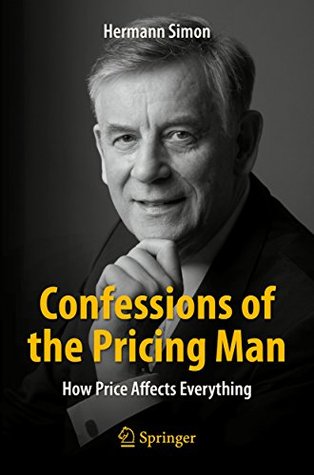More on this book
Community
Kindle Notes & Highlights
Read between
October 6 - October 26, 2019
But there is another aspect of luxury goods that poses a problem on the cost side: their buyers expect not only products of extraordinary quality, but also service at the same level.
The barrier to entry is enormous, and once you are in, the slightest sustained weakness can cause irreversible damage and cost you the game.
When a customer pays a very high price for a product, he or she expects that the product will hold its value. This makes the creation of enduring value another challenge for luxury goods manufacturers.
Luxury goods must always deliver the highest level of performance:
The prestige effect is a big driver:
Price contributes to the prestige effect and serves as a quality indicator:
Volume and market share must remain within strict limits:
Strictly avoid discounts, special offers, and similar actions:
Top talent is essential:
Having control of the value chain is advantageous:
The primary factor in price setting is the customers’ willingness to pay
none of them is easy.
There is generally no right or wrong strategy.
The price positioning s we have discussed reflect the different mix of buyers in a specific market.
Selling to each of these segments places different demands on managers and requires different skill sets.
“Very rarely is cost leadership a driver of superior profitability
I am convinced that only very few companies will achieve long-term success with a low-price strategy
Every percentage point change in prices can have a stunning impact on profitability
The pursuit of profit is both a driver of excellent pricing and an outcome of it; there is no way to separate the two topics.
“Profit is a condition of survival. It is the cost of the future, the cost of staying in business.”
Companies need to take prices into their calculations with the same intensity and rigor they apply to costs.
Price setting requires a thorough understanding of two things: how your customers perceive your value and the profit level you need to sustain or improve that value.
Balance is paramount. The central problem is that most companies are not balanced. They still underemphasize profits relative to such goals as market share, revenue, volume, or growth.
This imbalance results in bizarre pricing strategies and ineffective marketing tactics.
every business has only three profit driver s: price, volume, and cost.
The irony is that this prioritization runs in the opposite order of the effects these drivers have on profits.
The point is that improving prices has the greatest leverage on profits.
The obsessive pursuit of the wrong goals—customer counts, revenue, and market share —leads even the sharpest managers to neglect the effects that discounts and promotions have on profits.
“We’re getting out of the junk business, like employee pricing sales that boost market share but destroy residual values. It’s better to sell fewer cars at higher margins than more cars at lower margins. Selling five million vehicles at zero profit isn’t as good a proposition as selling four million vehicles at a profit.”
Having a high margin offers no guarantee that you will be profitable. One major reason is that this “cost-plus ” approach has little or nothing to do with the value perceived by the customer, the most critical determining factor for setting a price. The “cost-plus” process takes neither the value to customer nor the resulting effects on volume into account. Cost-plus can lead you to set your prices too high, which can cause volume to collapse. Yes, you make a lot of money per sale, but if sales fall sharply your overall profit is minimal. This is the textbook definition of “pricing yourself
...more
The simplest method to understand these effects and guard against the ensuing margin deception is a break-even analysis.
One question remains, though, when you set prices and figure out your break-even volume : Who wants your product? In other words, is the market large enough—and the perceived value sufficiently understood—to sell that many tools?
The break-even analysis is a simple yet powerful way to see how price change s affect the likelihood of turning a profit.
Price has a strong impact on volume and market share , and we use price elasticity to measure that impact.
Price elasticity
the ratio of the percentage change in sales volume and the percen...
This highlight has been truncated due to consecutive passage length restrictions.
Unless you have an unbeatable cost advantage which prevents your competitors from responding in kind, it is almost impossible
to establish a sustainable competitive advantage through lowering prices.
Who sets prices? It depends mainly on the structure of the market.
In markets with homogeneous products and with many buyers and sellers, no individual player sets the price. Instead, the market sets prices through the interplay of supply and demand
markets in which the sellers have some leeway in setting prices. This leeway can be substantial if the product is innovative or even unique.
Even for products which have a commodity at their core, such as water, you can find a way to charge more. You can brand them (Evian), package them better (the ergonomic, re-sealable, plastic bottle), or provide better service.
It is safe to say that a company’s organization and product portfolio determine which of the departmental or functional voices carry the most weight in a price decision and who ultimately decides.
“Pricing is guesswork. It is usually assumed that marketers use scientific methods to determine the price of their products. Nothing could be further from the truth. In almost every case, the process of decision is one of guesswork.”
all paths to profit begin with price. There is no way around that.
The reservation price
reflects the customer’s willingness to pay
The second, third, and fourth unit of a product brings less value (technically
speaking, less utility) than the previous one. This is called


